Blue spruce, or spiny fir, originally from the northern part of America, the symbol of the states of Colorado and Utah. In vivo, it grows in a rocky area from mountain rivers and streams. Blue spruce is not only a symbol of well-being and wealth, but also a magnificent beauty that can decorate and your yard. An adult tree is unpretentious in care, but a young seedling need attention and care, which we will tell about in the article.
Blue Spruce: Description
Blue spruce - slow-growing evergreen coniferous plant, we note its main features:
- There are many types of fir trees with blue needles, all of them are different size and shape. Most often, under the blue fir, it means a spiny fir, which in our conditions reaches a height of 15 m, the diameter of its crown is 6-8 m, although there are up to 30 m in their homeland.
- Blue spruce needles color from bright blue to grayish-green depending on the variety. Young cones red or purple, ripe light brown.
- High windy, zero- and frost resistance allows it to be successfully grown in various climatic conditions of our country. Frost resistance up to -30 ° C.
- Dust and exhaust gases of cars do not have a detrimental effect on ate, it allows them to use them for landscaping in urban conditions.
Blue spruce: how to plant
For the landing, it is pre-selected a suitable place where light and place will be enough. Adult blue spruce grows on any soils and undemanding to moisture. Despite the fact that a spruce tree is a shadow-colored tree, all the same blue species are planting in the sun, since the shadow of their crown becomes loose, and the color is not so bright.
The seedlings of blue firings choose such that at least the last six months were in the container, then when transplanting the plant is faster adapted, because its root system is already accustomed to the container, and when landing it will not be disturbed. It is better to choose an older plant, the age is 3-5 years old, as, first, it has already sucked, secondly, it will not be necessary to wait long until the Christmas tree is growing at that age it will immediately decorate the site.
The landing site is cleaned of weeds and dig a landing pit. The pit in size should be somewhat more than the volume of the roots of the plant. Since young roots will be difficult to pierce their way, the earth around them should be soft.
The seedling is removed from the container, if necessary, carefully circling the wall. A little soil from the container is rawped on the bottom of the landing pit. If it is possible, an earth is added to the planting pit from under a coniferous tree. The seedling is placed in the hole so that the levels of the earth coincide, excessive bulleting will be harmful to the roots.
The remaining place is covered with the earth and are well tamped to overlap air access to roots and prevent them drying. Immediately after landing, the plant is well watered, so the roots will turn faster and penetrate into the surrounding soil.
If the spruce is not transplanted from the container, then the best time for this is early spring, before the fir will start active growth. As soon as the Earth comes out, the seedlock is digging. Plant transplant along with a lore earth. An important rule is not to overwhelm roots, since the naked roots of ate die outdoors very quickly. Saplings of ate are always sold with closed roots: they are either wrapped together with a lore land, or planted in the container.
Blue spruce: how to grow
Saplings fir pretty picky care, and without proper care can die.
Watering
In hot dry weather, young trees are watered once a week, at the rate of 1 water bucket on the plant. The roots of all young seedlings, up to 3 years, are very close to the surface of the Earth, and during arid weather they require reinforced irrigation, so small ate watered more often and keep the land under them do not swam, mulk soil for better moisture retention. There were ate very love to spray, especially young plants.
Purchase care
When the weeds are removed and the soil loans do not deepen more than 7 cm, so as not to damage the root system of the plant. Some believe that it is better not to disturb the fir in the first years of life, allowing her to grow in the grass, only watered and mulch the soil by humus. Adult plants do not need fertilizer, young feed with mineral fertilizers.
Trimming
When used, it was used as a living decorative hedge, periodically trimmed. Do it when the annual increase ends, and all the needles on young branches are spread. The shoots that have grown too long and protrude beyond the edges of the desired fir shape, pinch and carefully "unscrew." Next year, such twigs do not continue growth, but develop side shoots. Spruce acquires the correct and more lush shape. Conduct pruning and in case they want to form a beautiful macushkin. Often spruce increases 2-3 macs. The desired top does not touch, the rest are pouring.
Wintering
In winter for young ate there are 2 threats:
- running branches under the weight of snow,
- sunburns.
To protect the fragile twigs of a young plant from heavy snow, before winter they are pulled up to the trunk and linked to a rope or grid.
Solar burns are capable of damage to the village that the needles on the south side will turn yellow first, then crept. In order to prevent such damage to such damage, the young tree for the winter in the first years of life is hidden under the underfloor material - x / b to a cloth or agrofiber. Adult plants do not need winter care.
Blue fir: reproduction
There are such methods of breeding firs:
- reproduction seeds
- reproduction with cuttings.
Reproduction of seeds
It is quite difficult to grow a blue spruce from the seeds, first of all, because of the seeds can grow both blue and green plant, and the color will determine only for the 2nd year of life, and only about 30% of seedlings will become blue.
Blue spruce seeds are collected in February. Together with the bumps, they are placed in a linen bag and dried in warmth. The bumps open, and their seeds with wings are removed. To remove them, you need to throw the seeds. Then the seeds are washed from garbage and essential oils, dried, and placed for 2 months under the snow or in the refrigerator for quenching.
Planting seeds are produced in April. As a fit for landing, a substrate consisting of peat and a delicate land is used. Before planting, the soil and seeds are treated with fungicides. The optimal seeding depth of seeds ate is 1-2 cm.
Shoots appear in 2-3 weeks, some of them are quite weak. Saplings thin, leaving the strongest. The distance between them should be about 7 cm. Optimum temperature for germination - + 15 ° C, young shoots protect from frost and direct sunlight. Watering is produced using spraying, often, at first twice a day.
The first year of life of the Christmas tree is carried out in a greenhouse, where they are easier to protect them from bad weather and adjust the climate. Plants on the second year of life are planted in the open ground, in April, when frosts stop.
Reproduction of cuttings
Blue spruce grown from the cuticle carries all the varietal features of the parent plant, so this method of reproduction of the freshers is the most common.
The side annual shoots of up to 10 cm long use as a material for cuttings. The cuttings are cut in April, during the beginning of the spring sazing. The stalk is cut along with the heel or rolled, the lower needles are removed.
For the preparation of soil take peat, humid and sand in equal parts. The cuttings are kept in a solution of Kornin 10-12 hours and stick into a wet and loose soil. In the planting capacity, the drainage is provided so that the water is not stuffed, and the cuttings did not start. The landing site is carefully tamped.
At the first time, the cuttings are covered with film or plastic bottles to create a greenhouse effect. In the daytime, the plants shadate to protect against the burning of sunlight. Heat cuttings in the greenhouse. Watering better with the help of spraying, it is impossible to allow the mooring of the soil, but it should not disappear either.
Cherenkov's roots appear in August in August, the appearance of new young needles on seedlings is indicative. At this time, it is reduced by watering, gradually remove the shading.
They planted in the open ground rooted cuttings only for the next season, in April, after the end of frosts.
Blue Spruce: Diseases and Pest
Diseases
Spirit Blue is quite often amazed by fungal diseases. The reason for this may be a thickened landing, excessive moisture, infection of the plant from the patient of the soil or from other sick trees. Take only healthy seedlings of fir trees, without signs of damage to the crust and needles.
Consider signs of the most common sobbies:
- Spherhete ate - fungal disease, can be called several types of mushrooms. When spitting the brown of the needles becomes brown, but it does not appear. Most often, the disease amazes the plant in May. Next year, brown needles are black, the mushroom grows. Shingle Snowfall is striking in autumn. First, red-brown spots appear on the needles, in the spring they form white mushrooms, which are darked over time. All kinds of spider are leading to serious damage to the needles, in the absence of timely treatment, the plant may die.
- Tracheosicose firing ate is a viral disease caused by soil pathogen. The disease amazes the root system of the plant, which over time loses the ability to supply nutrients, and the needles of ate blushes, then drill, in the end crept and dies. The most susceptible to the disease young plant seedlings.
- The rust of the needle fir begins with the appearance of yellow bubbles on the needles. The mushroom ripes, bubbles burst and disputes infect all the large and large plants of the plant.
- The rust of the cones amazes bumps of fir, looks like rounded brown formations on the inside of the scales. Seeds from affected cones do not spare.
- The necrosis of the cortex lead to a bark, the formation of unnatural growths. Over time, the affected areas are growing, the bark dies, the tree is dying.
- The ulcerative cancer strikes the trunks of the trees, manifests itself in the form of multiple resolving wounds.
When the first signs of any disease from the tree are detected, all damaged parts are removed, the wounds are smeared with a garden harvest, the plant under root is watered with fungicides. If the wound is on the trunk, it is cleaned up to healthy wood, treated with fungicides and smeared. In the spring and autumn, prophylactic trees are carried out with coarse drugs. Damaged parts of plants are removed. If there are many conifers on the site, it is sometimes easier to destroy the infected plant immediately than to treat everything.
Pests
They attack ate and pests, despite all, young and weakened plants are damaged.
- Cheesegging insects damage kidneys and young chew. Pests weaken young plants, suspend growth. Hisua and kidneys eat: weevil beetle, spruce buds, small firing flasher, cobwebs.
- Damage to fir cones cause gallians, seeds, leafpers, larvae of grinder, etc. damaged bumps are deformed, scattered on the part.
- Pests of bark, wood, roots - cereals, cores, gribers and drillings. Insects damage the bark on the trunks and branches of ate, form resinous holes in the wood of ate.
The main method of combating pests is the annual preventive processing insecticides. When pests are detected, there are 3-hook machining with an interval of 2 weeks of coniferous plants on the site. Processing both damaged plants and healthy.
Varieties of blue fir trees
Consider some common types of fir trees with blue conifers.
Glauca is a natural form, not susceptible to selection. Crown of conical shape. Coffee color - blue with different shades. Annual increase of up to 30 cm.
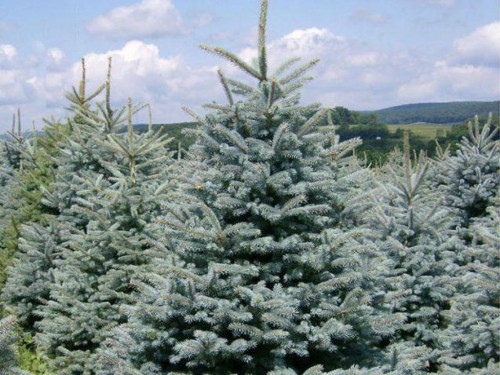
Glauca Globosa is a miniature fir, krona has a spherical shape, an annual increase is 10 cm, and an adult plant reaches a height of 2 m.
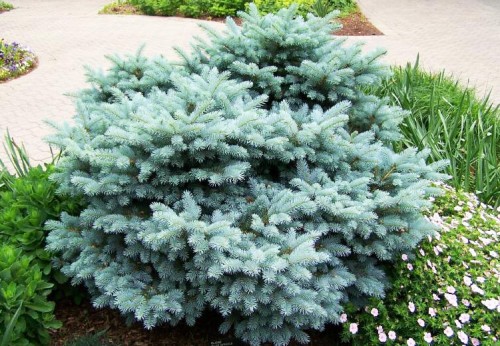
Iseli Fastigiata - a variety with a narrow-monical form of the crown, the branches are located vertically, like a poplar, a blue needle. It grows quickly compared to other species, at the age of 10 years reaches a height of 10 m.
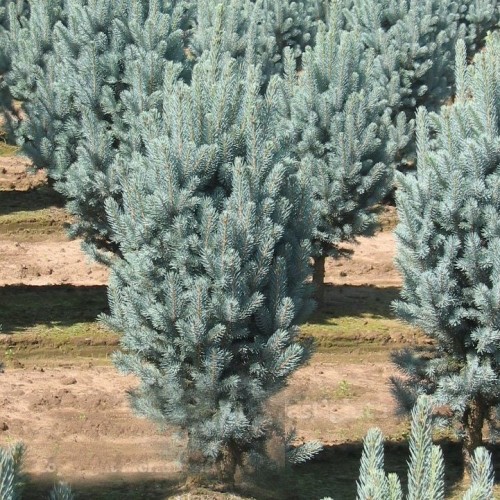
Hoopsiii - fir of medium size, up to 11 m, with a thick joy of saturated bright blue color.

Bialobok is a small size, up to 2 meters high, the crown is uneven. A feature is the color of young shoots - they are a golden shade. It is planted only in the sun, since the eye shade is lost.
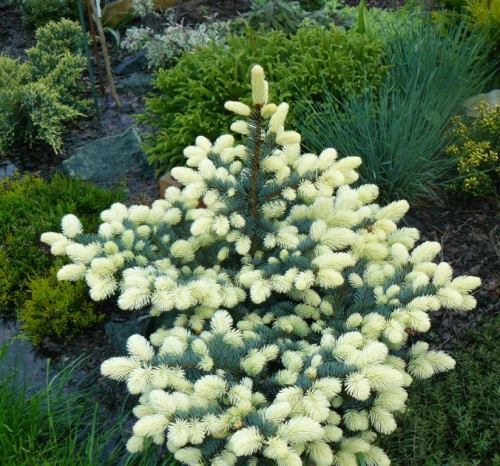
Blue Perl - miniature fir. At the age of 10 years, its height is only 40-60 cm. Crown rounded, dense.
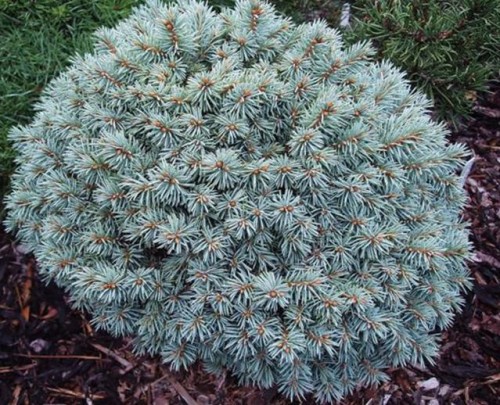
Blue Spruce: Photo
A wide selection of blue firs allows you to choose for your site the most liked view that perfectly fit into the design. The manifold of shades of the needles and shapes of trees allow you to create a beautiful composition consisting of several trees, or to issue a chic alive fence, which will delight the eye for many years.

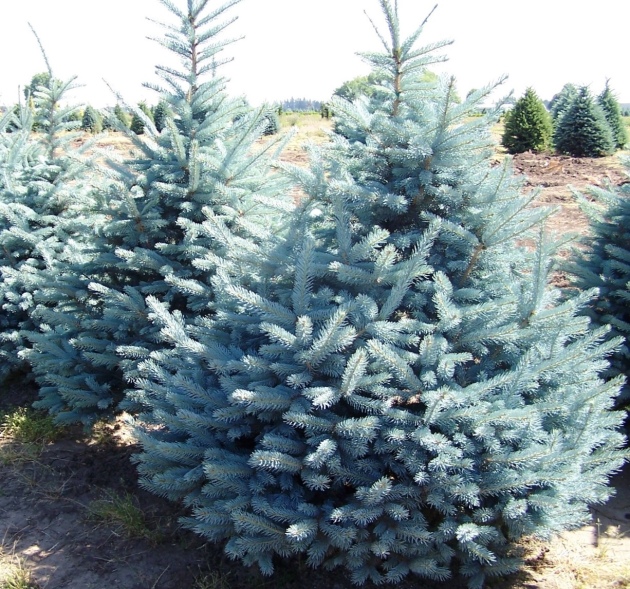
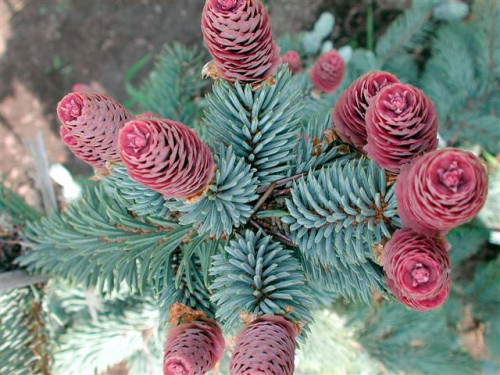

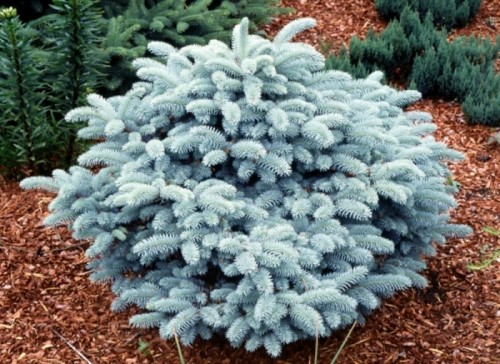
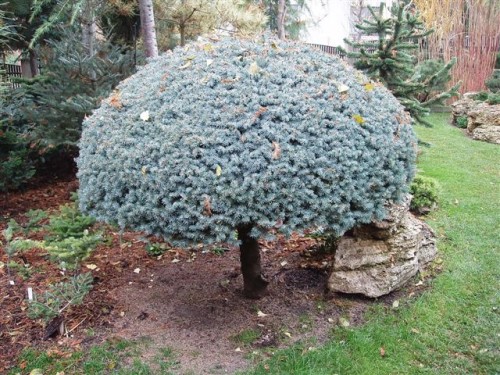
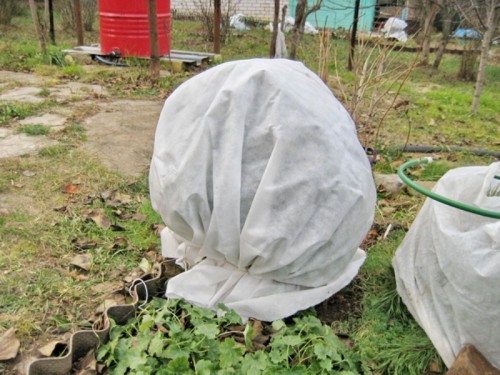
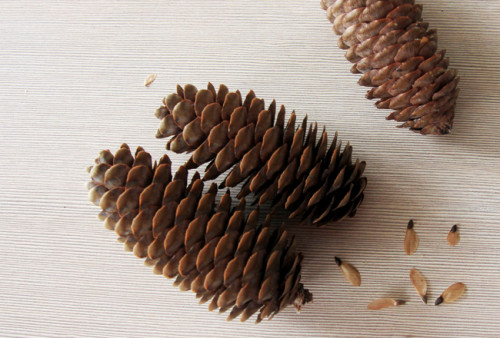

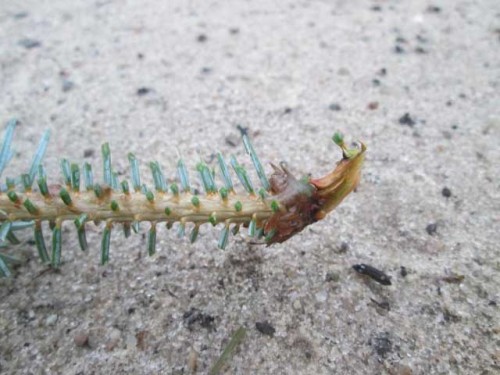
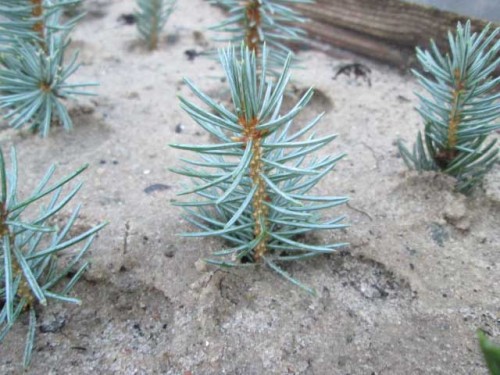
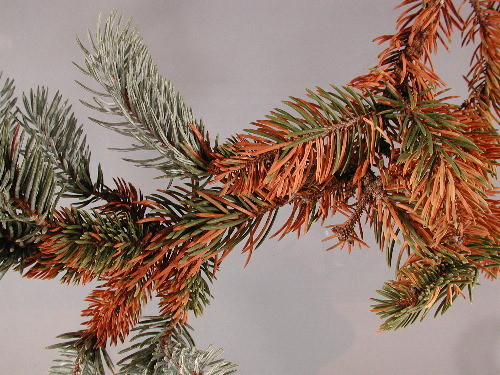
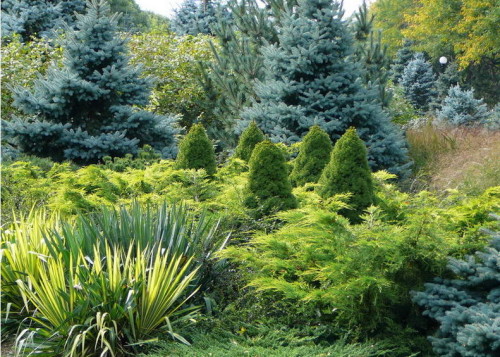
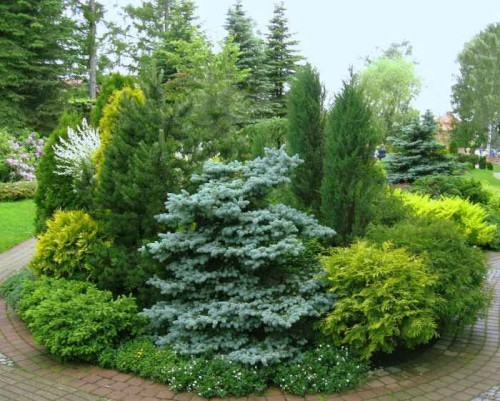
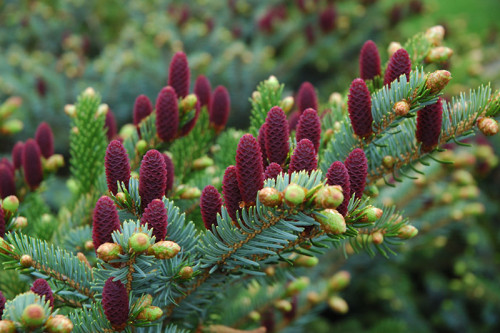












 Start a discussion ...
Start a discussion ...